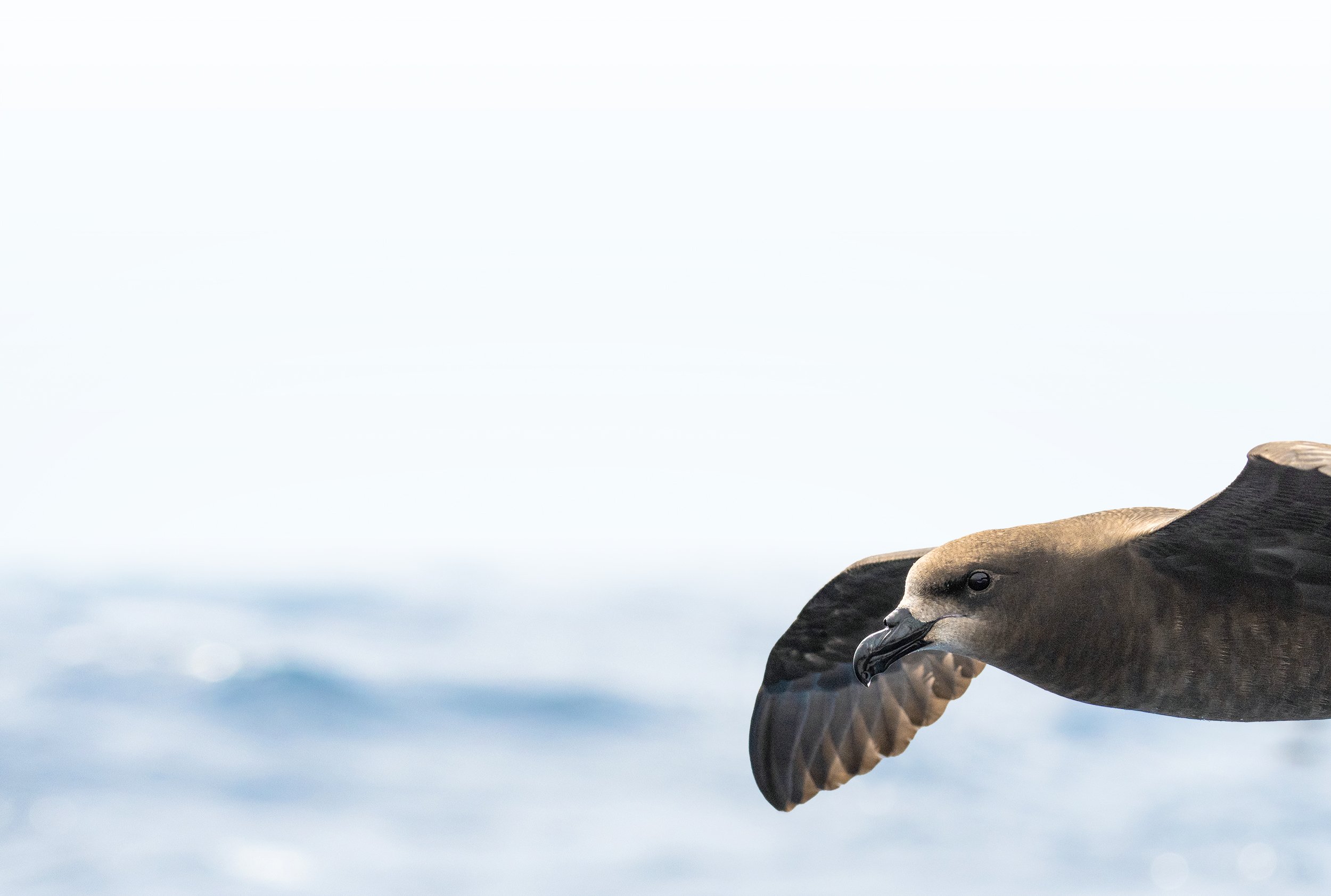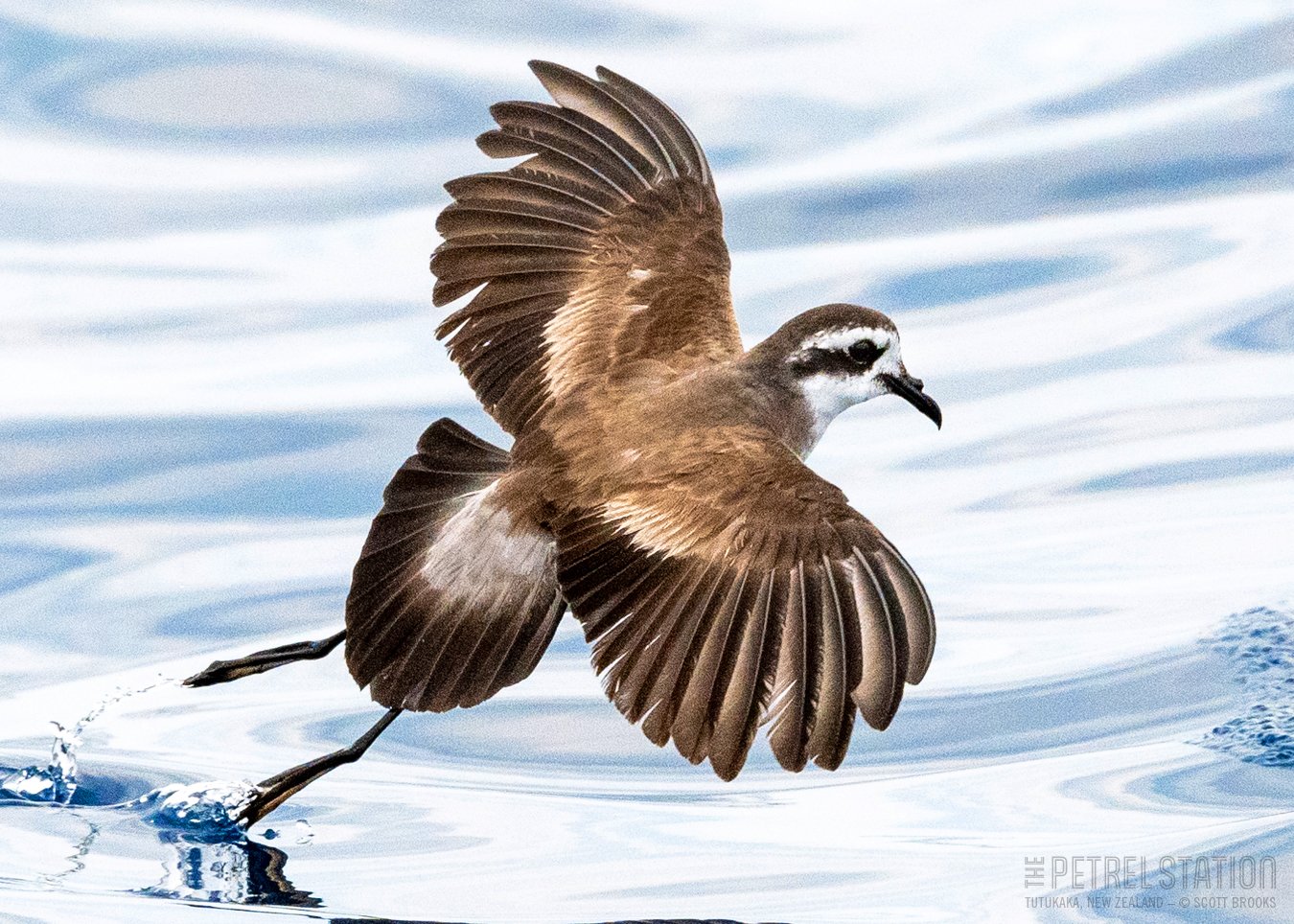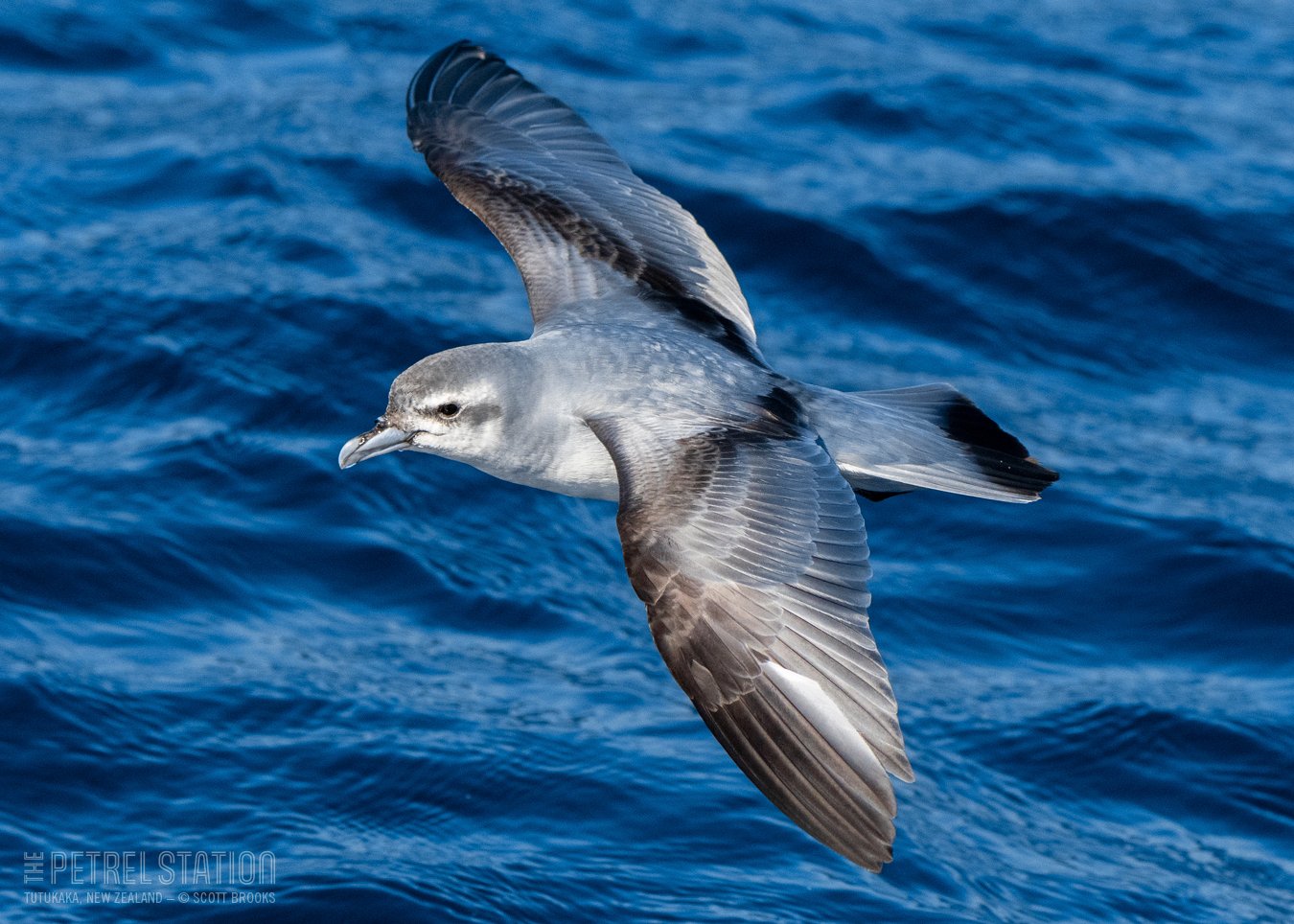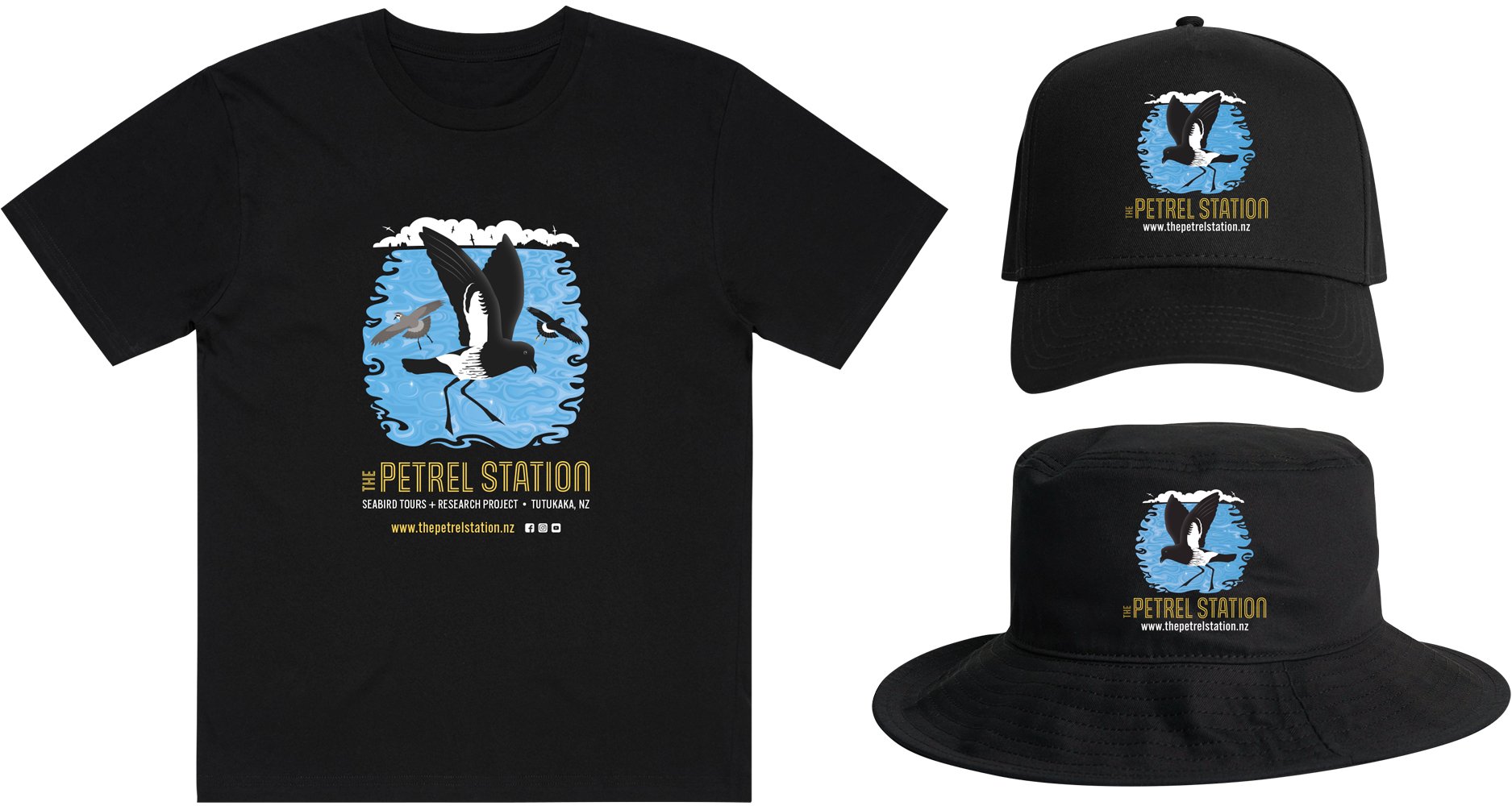
what seabirds have been seen at the petrel station?
Tutukaka, New Zealand
So far we’ve seen an impressive 69 seabird species on The Petrel Station tours, including:
21
Petrel species
12
Albatross species
5
Storm Petrels
10
Shearwaters
5
Skua species
4
Prion species
* Noddy, Gannet, Penguin, Gulls, Terns & Shags
12
other species*
Find out below which seabirds have been seen, and when, for each species group.
Albatross species
It’s pretty hard to beat watching a massive albatross soaring gracefully around the boat. These are some of the largest bird species in the world and it’s always a real treat for any birder to be in the company of these pelagic ocean wanderers.
Here’s the Albatross species seen so far, and time of year we’re more likely to see them (most of the albatross encounters are Apr to Nov but they can show up anytime):
GREAT ALBATROSS GROUP
NZ Wandering Albatross (2 subspecies)
– Gibson’s more common, Apr to Dec.
– Antipodean less frequent, Aug to Dec.Wandering Albatross
Very occasionally seen in winter or spring.Northern Royal Albatross
Infrequent but can show at any time of year.Southern Royal Albatross
Seen once so far, in December.
LESSER ALBATROSS GROUP
In New Zealand this group is also sometimes called Mollymawks.
Chatham Albatross
Occasionally seen in Oct to Dec.Buller’s Albatross
Mostly seen in May to Dec.Salvin's Albatross
Usually seen in Oct / Nov.Indian Yellow-nosed Albatross
Seen once so far, in September.White-capped Albatross
Our most common alby seen throughout the year but best Apr to Dec.Black-browed Albatross
Mostly seen in May to Oct.Campbell Albatross
Mostly seen in Apr to Oct.
SOOTY ALBATROSS GROUP
Light-mantled Sooty Albatross
Seen once, in July.
Check out the Albatross Image Gallery for lots of images. For more info on each species check out the very informative www.nzbirdsonline.org.nz
petrel species
The Petrels are by far the biggest group of pelagic seabirds we encounter, with 21 species seen to date. They range from massive Giant Petrels to small Diving Petrels.
Here’s the Petrel species seen so far, and time of year we’re more likely to see them (though they can turn up outside of these times):
Cook’s Petrel
Local summer breeder – seen in good numbers Sep to Mar, but usually seen in small numbers through winter too.Pycroft’s Petrel
Local summer breeder – often seen in small numbers Oct to Mar.Stejneger’s Petrel
One sighting to date, in Oct.Black-winged Petrel
Breeds in northern NZ and semi-regular on summer trips Dec to Mar.Mottled Petrel
Often seen during migration in Oct / Nov.Gould’s Petrel
Seen once, in Dec.White-naped Petrel
Occasional summer visitor in Dec to Mar.Blue Petrel
One sighting to date, in July.Black Petrel
Local summer breeder – can be seen in good numbers Oct to May.Westland Petrel
Very infrequent migration visitor in Oct & Apr.White-chinned Petrel
Sometimes seen during spring migration in Aug to Oct.Providence Petrel
Seen once, in July.Grey-faced Petrel
Local winter breeder – seen in good numbers May to Oct, but can be seen outside of these periods as well.Kermadec Petrel
Very infrequent summer visitor.Grey Petrel
Infrequent visitor in Oct / Nov.Soft-Plumaged Petrel
Very occasional May to July.Cape Petrel
Occasional visitor from May to Oct.White-headed Petrel
One sighting to date, in Oct.Common Diving Petrel
Local winter breeder – seen in good numbers Apr to Dec.Northern Giant Petrel
Semi-regular visitor in small numbers Apr to Nov.Southern Giant Petrel
Occasional autumn/winter visitor May / Jul.
Check out the Petrel Image Gallery for lots of images. For more info on each species check out the very informative www.nzbirdsonline.org.nz
shearwater species
With several shearwater species breeding locally, and several more visiting species, we see plenty of shearwaters. And witnessing the Buller’s and Fluttering Shearwaters feeding in huge workups of thousands, is a birding spectacle to behold.
Here’s the Shearwater species seen so far, and time of year we’re more likely to see them (though they can turn up outside of these times):
Buller’s Shearwater
The nearby Poor Knights Islands are the only place in the world where Buller’s Shearwater breed, so in season we see these striking seabirds in the tens of thousands. They can be seen in big numbers from late Sep to March, with small numbers outside of these times.Little Shearwater
Local winter breeder – seen in good numbers from May to Dec, then occasionally outside of these times.Fluttering Shearwater
Local summer breeder – seen throughout the year with biggest numbers from Aug to Mar.Hutton’s Shearwater
Infrequently seen but easily overlooked amongst the hundreds of Fluttering Shearwaters in the area - migration season likely best time.Flesh-footed Shearwater
Local summer breeder – seen in good numbers Oct to mid-May.Pink-footed Shearwater
Seen once, in July.Sooty Shearwater
Regularly seen mid-Sep to Jan, and then in small numbers to Mar,.Short-tailed Shearwater
Infrequent visitor in Oct to Feb.Streaked Shearwater
One sighting to date, in Nov.Wedge-tailed Shearwater
Very infrequent summer visitor from Dec to Feb.
Check out the Shearwater Image Gallery for lots of images. For more info on each species check out the very informative www.nzbirdsonline.org.nz
Storm Petrel species
It’s always a delight watching the tiny Storm Petrels as they bounce and glide across the ocean surface. And we’re very privileged to have the endemic, scarce New Zealand Storm Petrel as the main storm petrel out at The Petrel Station.
Here’s the Storm Petrel species seen so far, and time of year we’re more likely to see them (though they can turn up outside of these times):
New Zealand Storm Petrel
Our most common storm petrel! They can be seen in good numbers (20–40) from Oct to May, and we’ve recorded them in every month except August. They peak in Jan/Feb when numbers have reached up to 100! Check out the Specialty Seabirds page for more info on the iconic, once though to be extinct, New Zealand Storm Petrel.White-faced Storm Petrel
Regularly seen in good numbers Aug to Apr.Wilson’s Storm Petrel
Often seen during migration in Apr/May and again in Oct/Nov.Black-bellied Storm Petrel
Very infrequent visitor, in April or Nov.Grey-backed Storm Petrel
Infrequent visitor in July/Aug.
Check out the Storm Petrel Image Gallery for lots of images. For more info on each species check out the very informative www.nzbirdsonline.org.nz
Prion species
The Poor Knights Islands are the only place Fairy Prion breed in northern New Zealand, and in season we get to enjoy the spectacle of thousands of them feeding in huge workups. Other Prion species are a lot less frequent.
Here’s the Prion species seen so far, and time of year we’re more likely to see them (though they can turn up outside of these times):
Fairy Prion
Usually seen in big numbers from late July to Dec/Jan, with small numbers outside of these times.Antarctic Prion
Occasional winter visitor in May to Aug.Broad-billed Prion
One sighting of 5 birds to date, in July.Thin-billed Prion
One sighting to date, in July.
Check out the Prion Image Gallery for lots of images. For more info on each species check out the very informative www.nzbirdsonline.org.nz
Skua species
It’s always an interesting time when a Skua (Jaeger) comes in and throws some chaos into the mix with their aerobatic pirating techniques.
Here’s the Skua species seen so far, and time of year we’re more likely to see them (though they can turn up outside of these times):
South Polar Skua
We now have these turning up fairly reliably in late-Oct to mid-Dec. This includes 3 sightings of the much scarcer Dark Morph.Brown Skua
Infrequent autumn / winter visitor May to Aug.Long-tailed Skua
Infrequent spring visitor Oct to Dec.Arctic Skua
Infrequent spring / summer visitor.Pomarine Skua
One sighting to date, in Jan.
Check out the Skua Image Gallery for lots of images. For more info on each species check out the very informative www.nzbirdsonline.org.nz
Other seabirds
We also see a bunch of other seabirds including Noddys, Gannets, Penguins, as well as some species of Terns, Gulls and Shags (Cormorants).
Here’s the other seabird species seen so far, and time of year we’re more likely to see them (though they can turn up outside of these times):
Grey Noddy / Ternlet
Summer visitor – mid Dec to end Apr. Biggest numbers in Feb/Mar.Little Penguin
Occasionally seen Sep to March, but can be around anytime of year.Australasian Gannet
Seen year round.Arctic Tern
One sighting to date, in July.White-fronted Tern
Mostly seen Sep to May, but can be around anytime of year.Caspian Tern
Occasionally seen in harbour – any time of year.Red-billed Gull
Seen year round at islands and in harbour.Black-backed Gull
Seen year round in harbour.Pied Shag
Seen year round at islands and in harbour.Black Shag
Occasionally seen in harbour, any time of year.Little Pied Shag
Occasionally seen in harbour, any time of year.Little Black Shag
Occasionally seen in harbour, any time of year.
Check out the Other Seabirds Image Gallery for lots of images. For more info on each species check out the informative www.nzbirdsonline.org.nz
YET TO BE SEEN…
Here’s some other seabird species that have been recorded within the area where The Petrel Station seabird tours and research operates … but so far we haven’t recorded them ourselves on one of the tours … yet :)
Grey-headed Mollymawk
Southern Fulmar
Great Shearwater
Brown Booby
Sooty Tern
Brown Noddy
Black Noddy
White-tailed Tropicbird
Red-tailed Tropicbird
Lesser Frigatebird

Does being out amongst stunning seabirds sound like you? Must be time to come out to The Petrel Station.
get some gear
Get that super stylish seabirdy look with The Petrel Station’s official team t-shirts and hats.
















